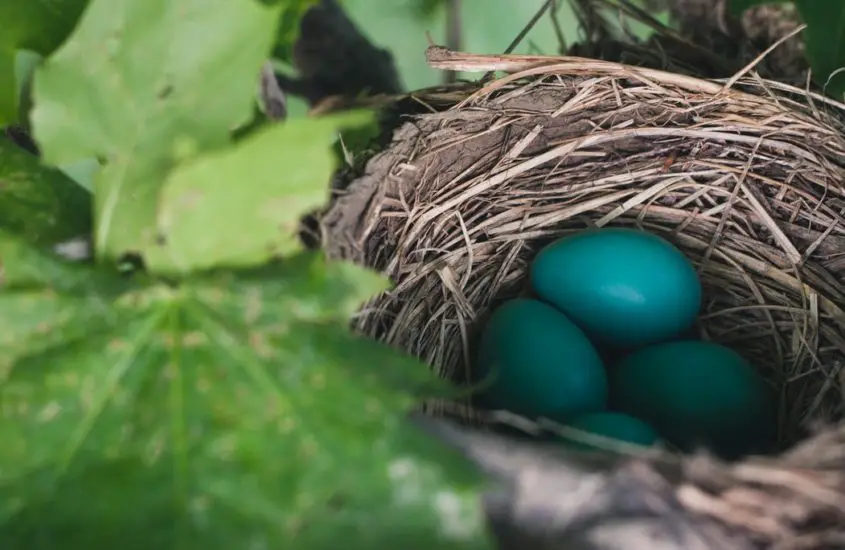21 Fresh Vegetables and Spices Natural Dyes for Easter Eggs

Using natural dyes for Easter eggs from fresh vegetables and spices to create eggs is an integral part of dying easter eggs. Of course, you can always use egg commercial dyes that are accessible through your local convenience store, but using natural dyes is not only safe for the environment but it’s incredibly easy.
Vegetables and spices are natural colorants and have been used for ages, so you can say it works flawlessly.
Pros of Using Natural Dyes for Easter Eggs
So it may come to a surprise you but there are several advantages to using fresh vegetables and spices as a natural dye for Easter eggs. The old-fashioned egg dying is an Easter tradition, although time-consuming: It can be a really fun family project. Here are five major benefits.
- Eco-friendly
- Non-toxic
- Easy to prepare
- Convenient
- Biodegradable
The tradition of dyeing eggs is part of many households. The amount of natural dyes found in nature is tremendous. While some of them you’ve probably heard before, many of them have not been tried.
Ingredients and Tools
This recipe is expected to make at least one dozen eggs and has an average duration time of four hours, inclusive of 2 hours of cooling time. Before beginning your natural dyeing project, save vegetables and spices in a plastic bag and place in the fridge until you’re prepared to use them.
- A dozen eggs (stored at room temperature)
- 2.5 tablespoons white vinegar
- 3 cups of water
- Vegetables of choice
- Saucepan
- Bowl
- Spoon
- Strainer
- Olive oil (or any kind of oil)
It is safe to use everyday kitchen utensils for your natural dyeing project. Considering that most of the ingredients included in this project are all-natural, you do not have to be concerned about using the utensils that you normally cook with. However, you should stay away from wood or plastic utensils seeing that they are more vulnerable to dye stains.
If somehow you manage to stain your stainless utensils during this project, simply wash your them with mild dish soap and a bit of chlorine. Rinse.
Choose Vegetable by Color
- For natural greens – use grass, celery, collard greens, green beans, peas, spinach, asparagus, olives, green bell peppers, parsley, green cabbage or other vegetables and spices.
- For orange – use mushrooms or gardenia.
- For yellow to orange – mix turmeric, curcumin, carrot, and saffron.
- For yellow – use ginger or marigold for a brighter yellow.
- For orange – mix parsley and sweet pepper.
- For orange to yellow – use annatto.
- For orange to red – mix paprika, red pepper, saffron, and mustard.
- For purple to red – mix paprika and red pepper.
- For dark red – use red palm oil or mix paprika and parsley.
- For pink – use pink edible mushroom.
- For greenish-yellow to yellow – use Stinging nettle.
- For Brown – use onion, cacao, cinnamon or the shea nut.
- For blueish to red – mix beetroot and opuntia.
- For red – use red cabbage, strawberries, red perilla, or red-fleshed potato.
- For deep red – use elderberry.
- For bright red – red fruit (Aronia)
- For reddish-like purple – use grapes.
- For red, purple and blue – mix strawberries, dark blueberries, grape skin, raspberries, and red perilla.
- For purple-like black – use black currant.
- For dark violet-blue – use indigo plant.
- For bluish-like red – use hibiscus.
Before you Begin.
It is recommended that you clean the eggs before dyeing. Mix vinegar and mild dish soap and wash. Rinse well.
Instructions
- In the saucepan, mix together the chosen vegetable or spice, vinegar, 4 cups of water and bring to a boil.
- Set the heat to low and cover the saucepan, simmer for 40 minutes.
- Using a strainer, pour the natural dye into a bowl and let it cool down to room temperature.
- Once the eggs are cooled down, place them back into the saucepan and add another layer of natural dye.
- Set the heat to medium and boil for 20 minutes, turn the heat down to low, cover, and simmer. Repeat steps if color isn’t good enough.
The time for the natural egg dyeing process may vary depending on the original color of the eggs. - Leave the eggs in the saucepan and let cool down. When the eggs have cooled down, place into the bowl then in the fridge.
- Let it rest until your eggs have reached your desired color.
- Once the eggs are cool and can be touched, glaze them gently with olive oil using a soft cloth or paper towel.
- Refrigerate.

About The Author: Hi, I’m Jessica. I’m a Mom of 2 and I love DIY hacks, home decor ideas and non-toxic cleaning tips. I created this website to share my knowledge with a community of like-minded people who love simple, easy and safe ways to keep their home clean and inspiring. I hope you enjoy!









